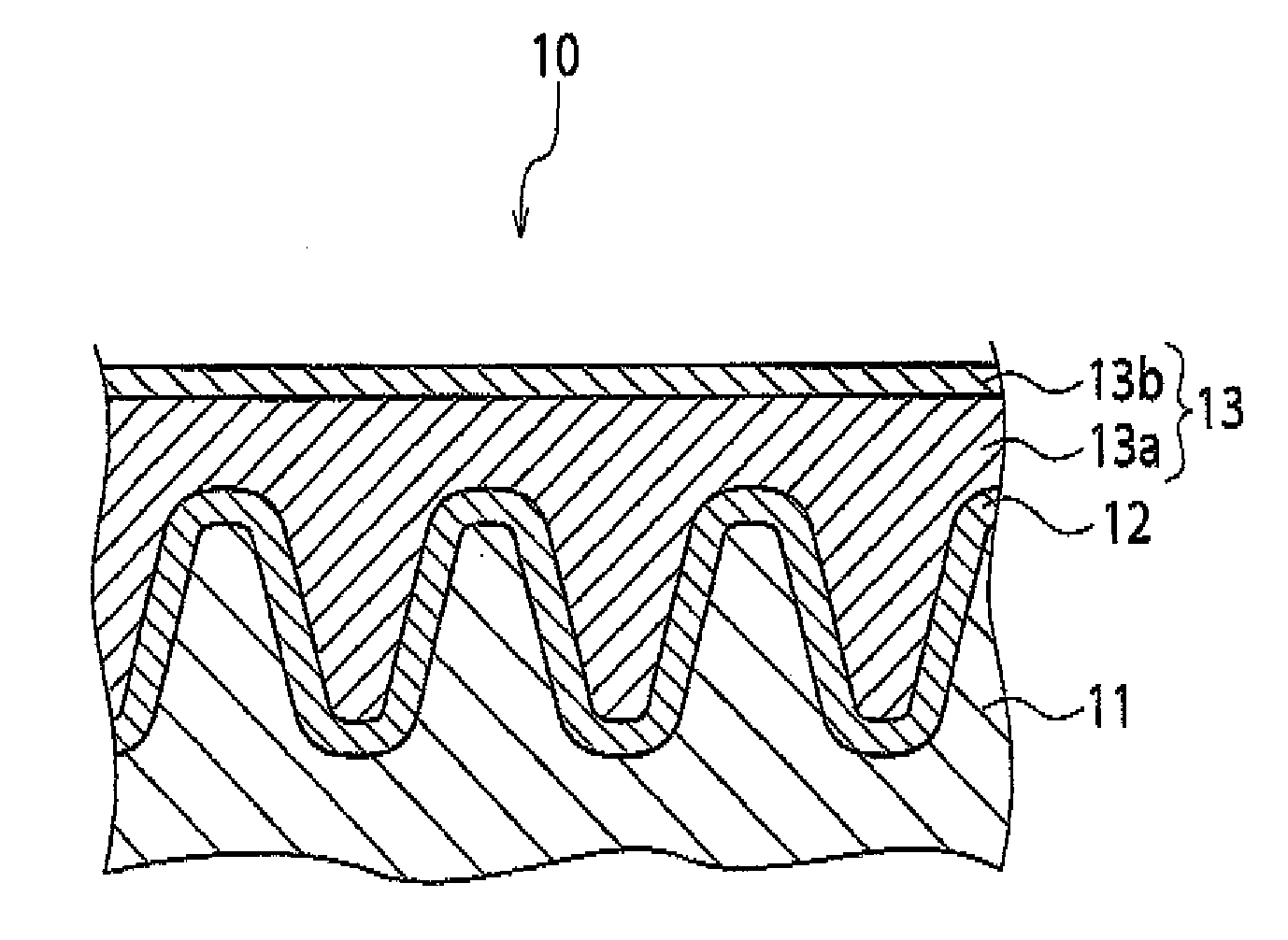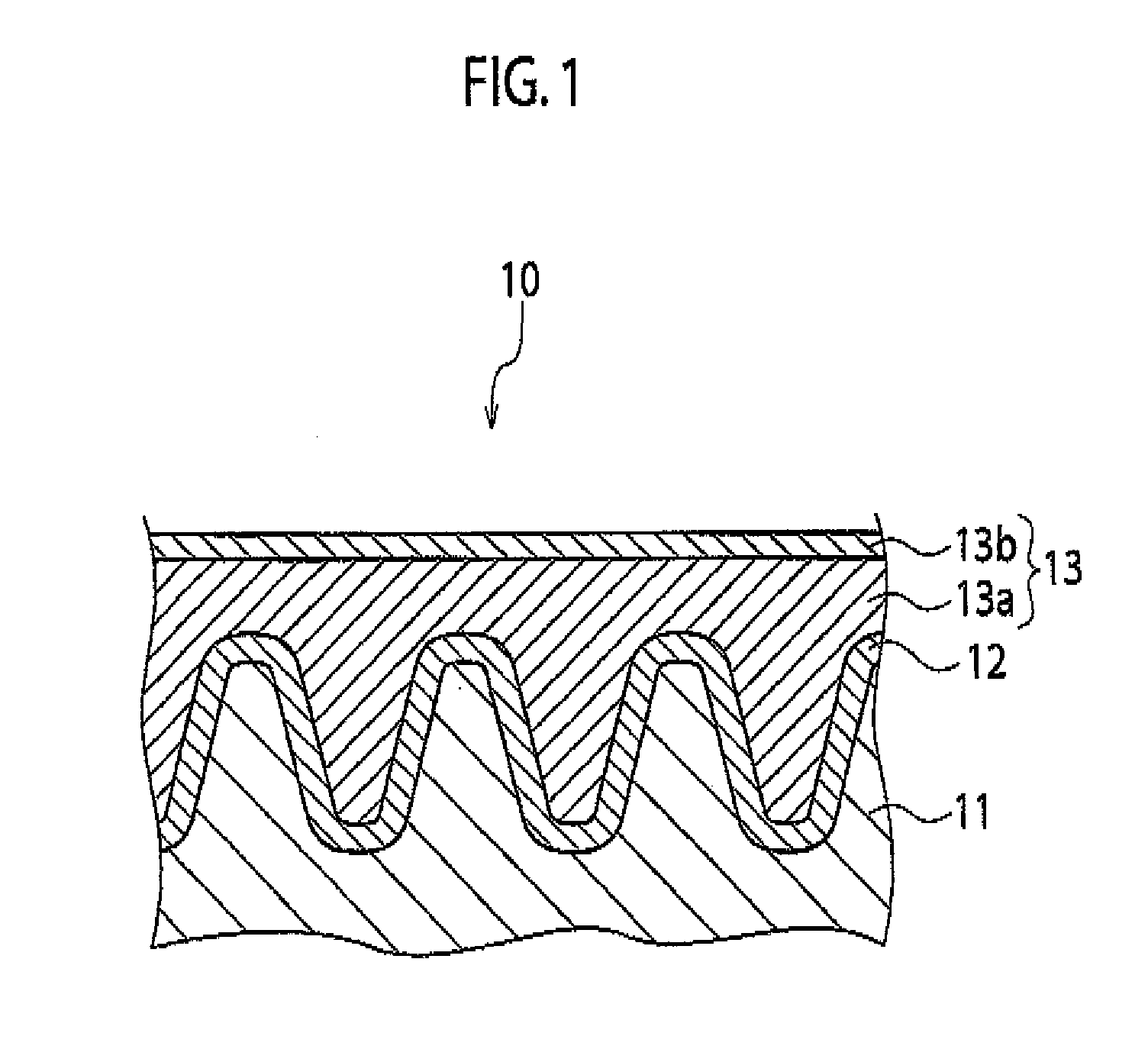Solid electrolytic capacitor and method for producing same
a solid electrolytic capacitor and electrolytic technology, applied in the direction of capacitors/absorbents, capacitor electrolytes, hybrid capacitor electrolytes, etc., can solve the problems of reducing the heat resistance of the capacitor, the esr of the conductive polymer with a high degree of conductivity is low, and the withstand voltage of the capacitor tends to fall, etc., to achieve high heat resistance, low esr, and high capacitance
- Summary
- Abstract
- Description
- Claims
- Application Information
AI Technical Summary
Benefits of technology
Problems solved by technology
Method used
Image
Examples
preparation example 1
Preparation of Conductive Polymer Solution (I)
[0138]14.2 g of 3,4-ethylenedioxythiophene, and a solution prepared by dissolving 42.6 g of a polystyrenesulfonic acid (mass average molecular weight: approximately 300,000) in 2,000 ml of ion-exchanged water were mixed at 20° C.
[0139]With the thus obtained mixed solution undergoing constant stirring with the temperature held at 20° C., an oxidation catalyst solution containing 29.64 g of ammonium persulfate and 8.0 g of ferric sulfate dissolved in 200 ml of ion-exchanged water was added, and the resulting mixture was then stirred and reacted for 15 hours.
[0140]The resulting reaction liquid was subjected to a dialysis treatment to remove ion impurities, and an ion exchange treatment was then performed, yielding a solution containing approximately 1.6% by mass of a conductive complex of polystyrenesulfonic acid and poly(3,4-ethylenedioxythiophene) (hereinafter referred to as a PEDOT-PSS solution).
[0141]Imidazole was then added to 100 g of...
preparation example 2
Preparation of Conductive Polymer Solution (II)
[0142]4.8 g of hydroxyethyl acrylate and 4.0 g of pentaerythritol (PETT) were mixed and dispersed within the conductive polymer stock solution (MB) from preparation example 1, yielding a conductive polymer solution (II).
preparation example 3
Preparation of Conductive Polymer Solution (III)
[0143]6.4 g of pentaerythritol was mixed and dispersed within 100 g of the conductive polymer solution (I) from preparation example 1, yielding a conductive polymer solution (III).
PUM
| Property | Measurement | Unit |
|---|---|---|
| melting point | aaaaa | aaaaa |
| pH | aaaaa | aaaaa |
| particle size | aaaaa | aaaaa |
Abstract
Description
Claims
Application Information
 Login to View More
Login to View More - R&D
- Intellectual Property
- Life Sciences
- Materials
- Tech Scout
- Unparalleled Data Quality
- Higher Quality Content
- 60% Fewer Hallucinations
Browse by: Latest US Patents, China's latest patents, Technical Efficacy Thesaurus, Application Domain, Technology Topic, Popular Technical Reports.
© 2025 PatSnap. All rights reserved.Legal|Privacy policy|Modern Slavery Act Transparency Statement|Sitemap|About US| Contact US: help@patsnap.com


